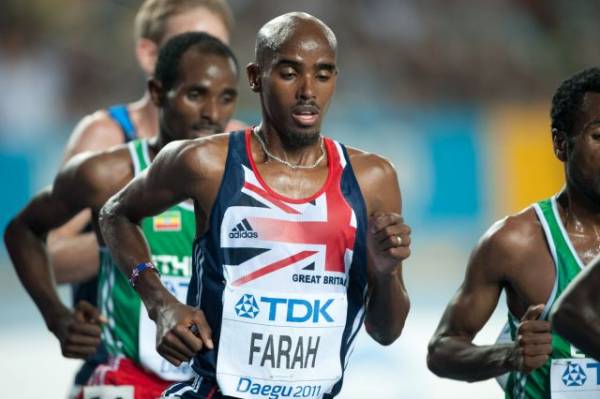One of the main problems with running injuries is that they rarely are a result of a catastrophic event. They usually result from running out of the capacity to withstand injury. I first learned of this concept from Dr. Stuart McGill. He uses it to explain back trauma and says that we only have so many flexion events we can tolerate. This applies to single training sessions, a 24-hour period, a week, or even a lifetime. Think of it as currency. Once we spend it, there’s little chance to get it back. In the case of running, many of us overspend and wonder why we have essentially gone broke. And the problem with the body is that there’s no credit card option available to allow you to keep spending.
Your Training and Recovery Spending Account
Ian King, one of the world’s foremost strength coaches, believes that for every hour you spend training you should spend an equal time on therapeutic means to balance it out. I’m not sure that in the modern world everyone has so much spare time that they can afford to spend an equal amount on recovery, but there are ways to help the situation. Let’s consider something like this:
I really like a simple formula I learned from the guys at Gym Jones, some of the world’s leaders in endurance training. Here’s their formula with some additions of my own based off the addition of the necessary two-hour or longer sessions needed for marathon or Ironman training:
Work Costs of Training:
- Workout +10
- Long workout (2+ hours) +20
- Intense track workout (example: 2km warm up, 8 x 800m hard/400m easy, 2km cool down) +20
Recovery Benefit Values:
- Sleep eight hours -5
- Massage -5
- Foam roller -3
- Nap -1
- Contrast shower -3
- Therapy (physiotherapy, “reset” type work such as Primal Move or Original Strength, acupuncture, or FMS-based corrective work) -8
- Walk -1
- Clean diet -5
- Restorative yoga or stretching -5
While it may be impossible to eat perfectly every week – let’s be realists and admit that we sometimes make less than optimal choices for performance – you can see that the whole package together can combine to offset most of the damage caused by hard training. Sleeping eight hours every night, eating well, drinking enough water, massage, and stretching are your primary recovery tools. Neglect one, or a few, at any time and you will likely find yourself in injury territory quickly.
The Pros and Cons of Cortisol
When people neglect sleep, an interesting thing happens. The body goes into a stressed state and increases production of cortisol. Many in the fitness world fear cortisol, mostly because it acts in opposition to one of our primary good hormones testosterone. However, cortisol is actually a performance booster, but only in the short term. Ever had a terrible night’s sleep before a big event and still had a personal best performance? That’s cortisol in action. In fact, it’s such a huge performance booster that before EPO, cortisol was the drug of choice for many professional cyclists. If cyclists take it to boost performance, then you know it can do amazing things.
In the short term, we can burn the candle at both ends and see a sharp rise in abilities. That’s actually what most training plans seek to do – push you into the red zone to force greater performance from the body. But stay there too long and the wheels will start to fall off. The only way to offset something as simple as not getting enough sleep is to eat even better than usual while backing off on training. That equation always needs to be balanced.

The True Meaning of Work Capacity
The notion of capacity, then, is basically how much work we can cope with in a given timeframe and what recovery methods we use to offset it. For big events like a marathon, Ironman, or Spartan Ultra Beast race, it is entirely possible to carry some recovery credits into the race itself – this is what is commonly called tapering. Tapering is nothing more than storing up as many recovery points as possible close to a race so that you can really push hard in that event.
Unexpected, But Important Variables
One thing that can help offset injuries when running is that you have a choice of training surfaces. Running on hard ground like sidewalks, roads, and tracks can be taxing on the body. Changing that for grass, dirt trails, or even sand can decrease the damage done by the session.
Renowned coach Alberto Salazar said that if world-champion runner Mo Farah were training 100 miles each week of distance running, he would only do a total of five of those on a hard surface like a road. The rest of Farah’s mileage would be made up of grass, dirt, and wood chips to lessen the damage to the body. Only in the final weeks before a big race would they switch to some bigger miles on the road or track, with the main purpose being simply to familiarize the body with the pounding it would take during the race itself.

Perhaps then we need to add to our chart with these:
- Run on road or track 0
- Dirt, grass, sand -1
Shoes, too, can make a difference in how our body copes with training stress. A thin, flat running shoe like the many barefoot or minimalist shoes now available, will be a big additional stress for many runners, while softer, padded running shoes (what we’d call “normal” running shoes) will actually decrease the shock absorbed by the body. Shoes that are worn out will obviously add stress, as will swapping to a shoe that doesn’t suit you.
Here’s how shoes affect the picture:
- Worn-out shoes +1
- Racing flats or barefoot shoes +1 (unless thoroughly conditioned to run in them)
- Ill-fitting shoes +1
Try keeping a log of all the training debits and credits you make in a given time frame and see how closely you can balance them out. You’ll find that the closer you get to balance, the better you perform.
The biggest lesson for most people is that if they want to add more training they need to add more recovery so that the equation stays balanced. Remember, the answer to the question of how much performance can you put out is not just about how much work you do. It’s about work multiplied by your recovery strategy.
Photo 1 courtesy of Shutterstock.
Photo 2 by Erik van Leeuwen [GFDL or GFDL], via Wikimedia Commons






